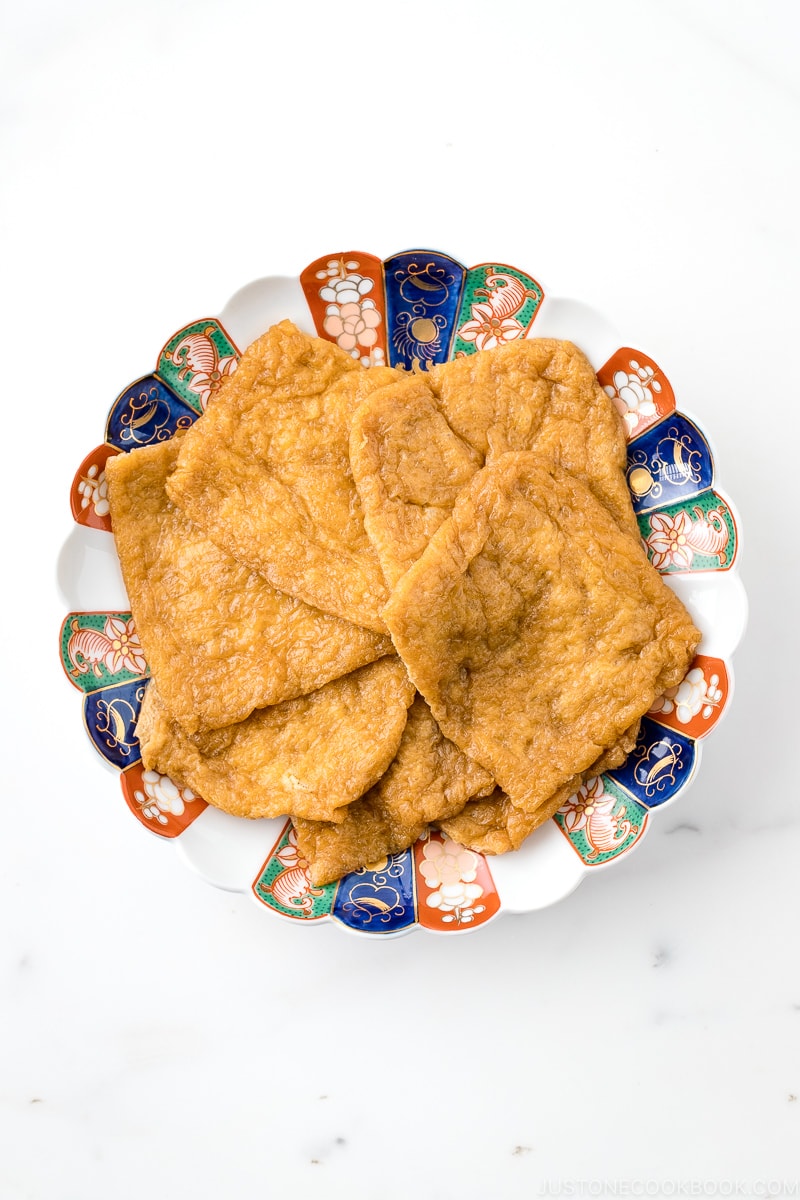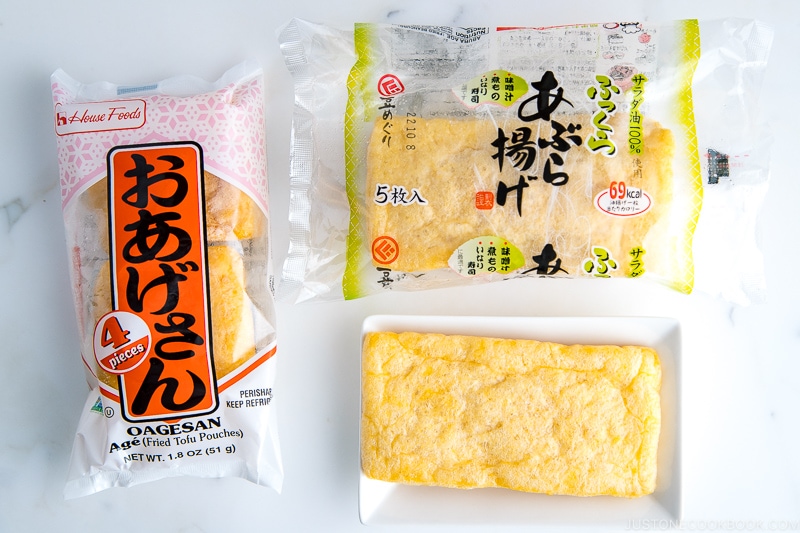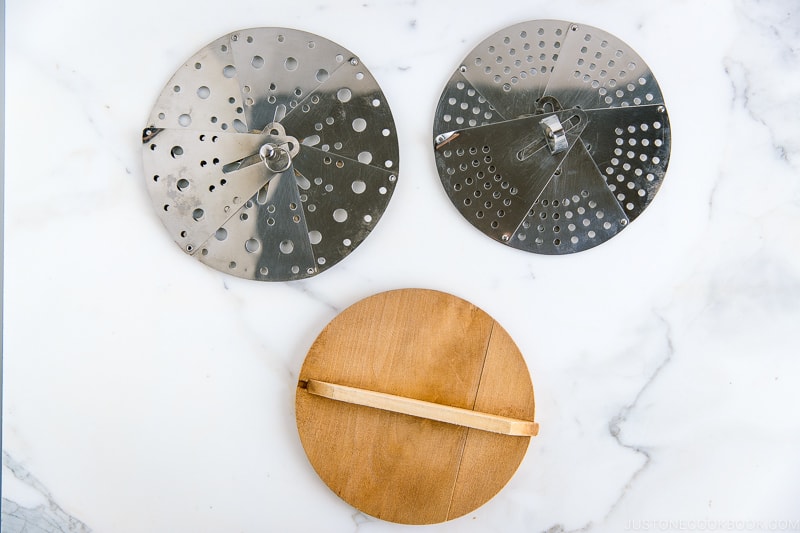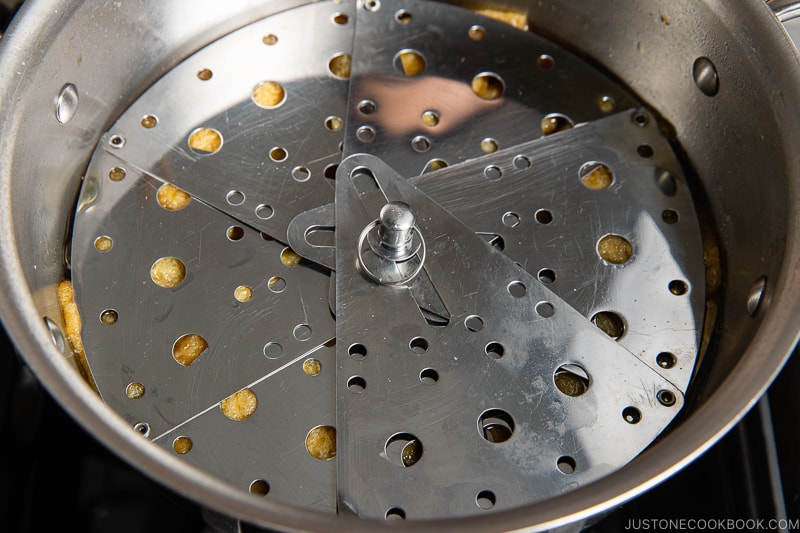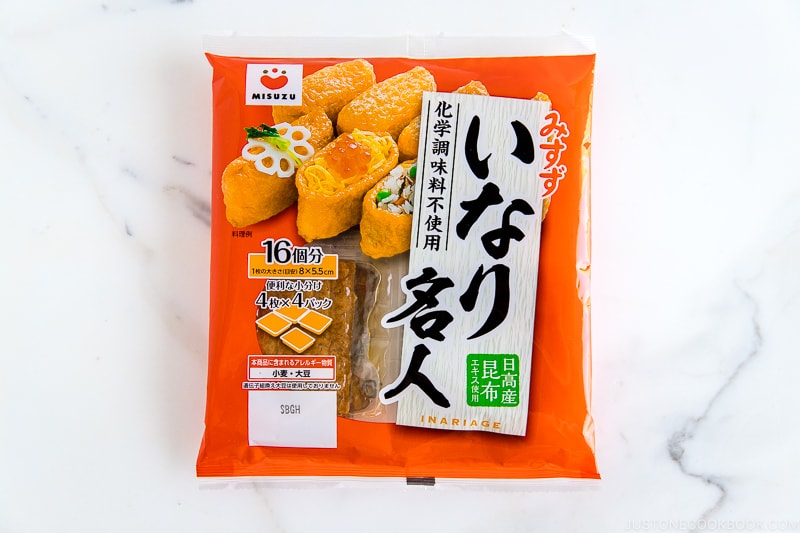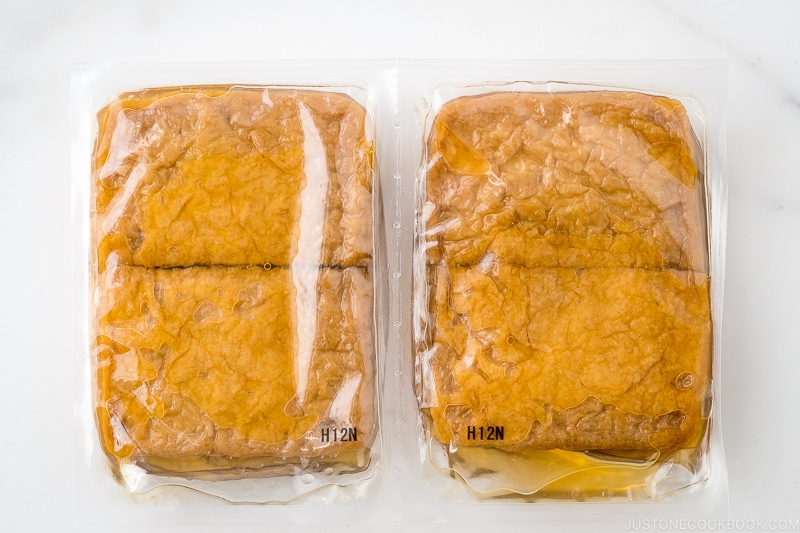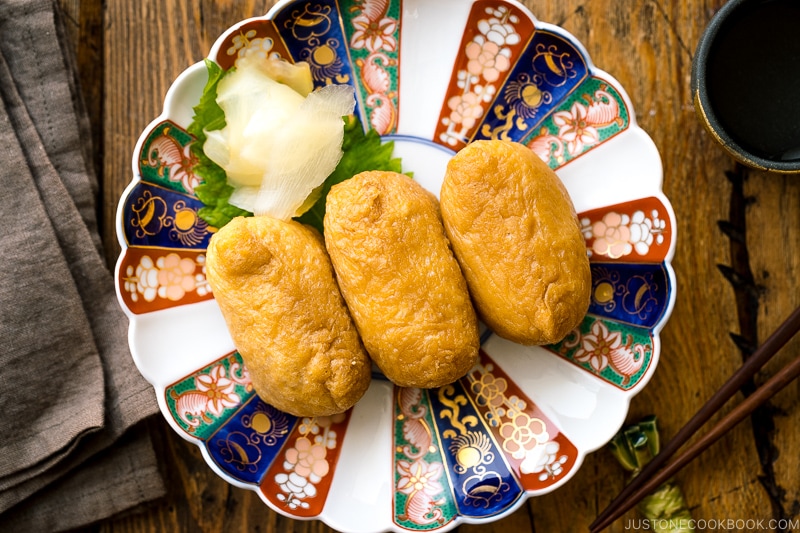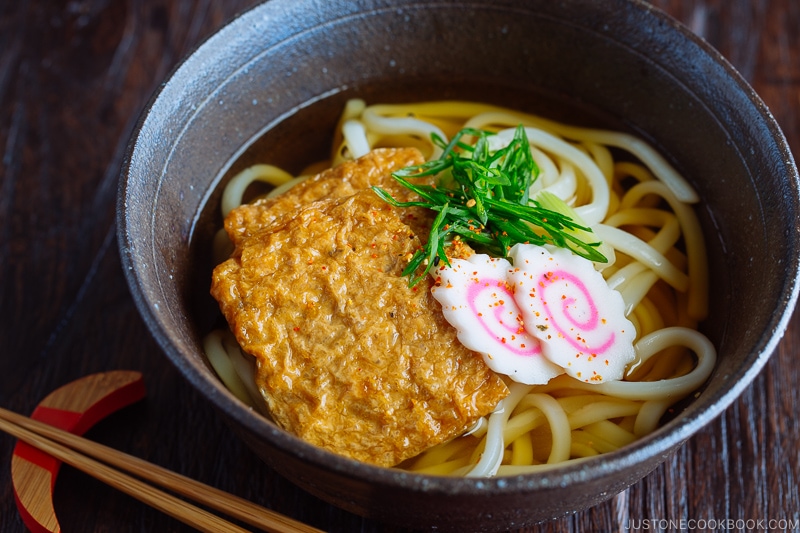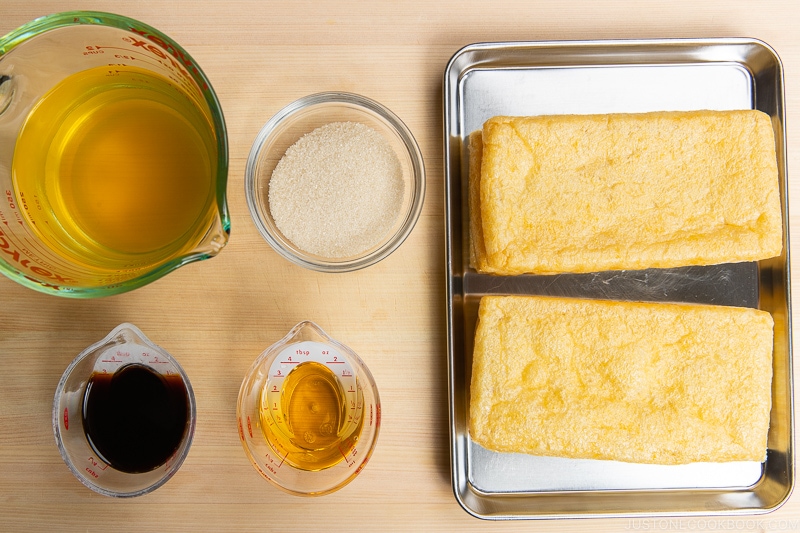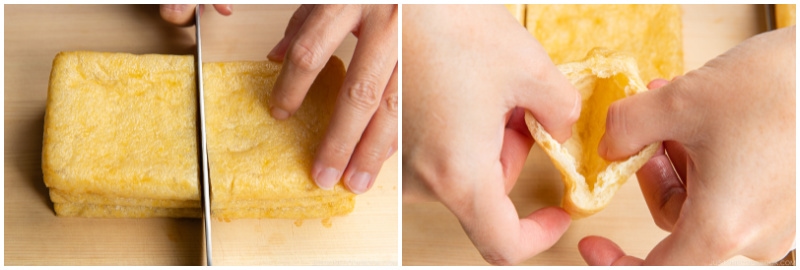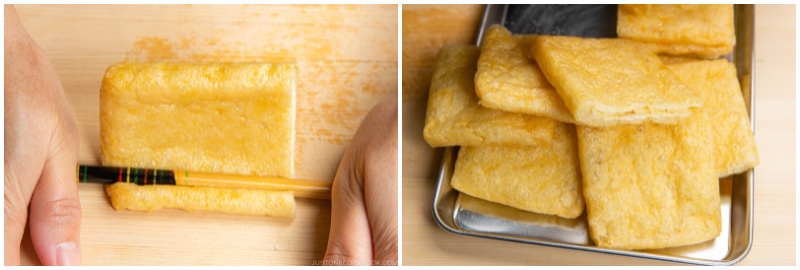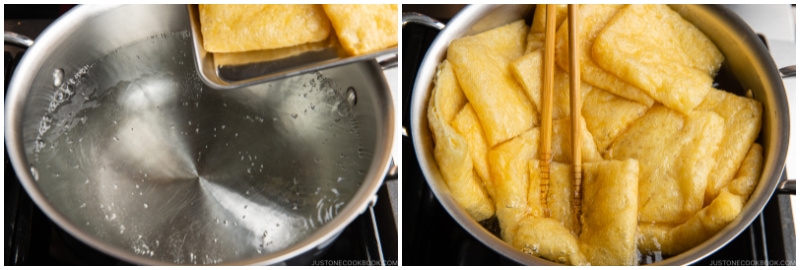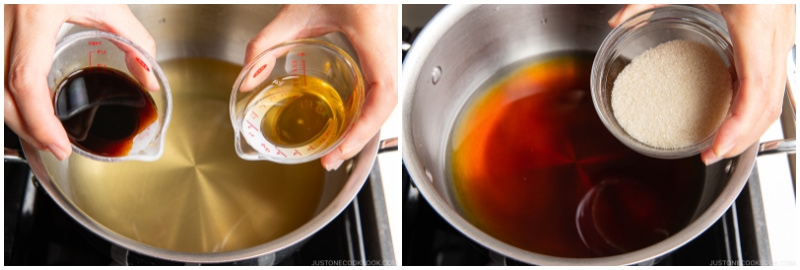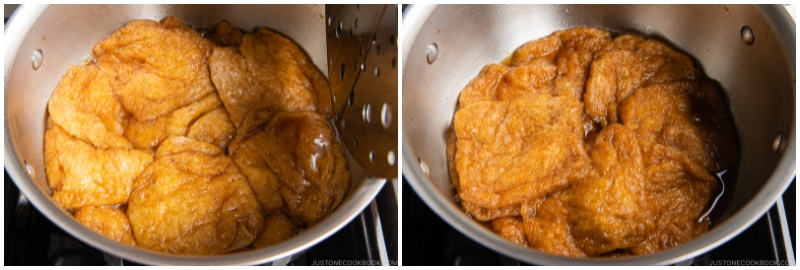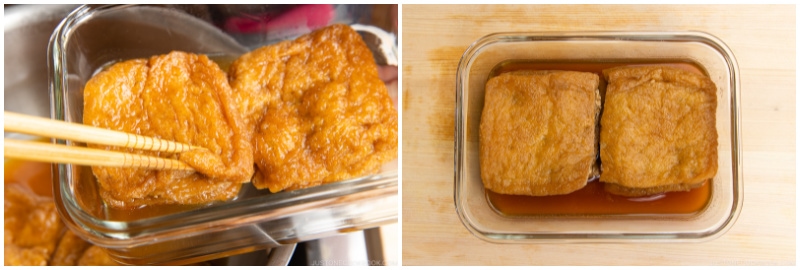The beloved Japanese comfort dishes Inari sushi and kitsune udon have one key ingredient in common. Called Inari age, these seasoned tofu pockets take a humble vegan protein source and make it irresistibly savory, sweet, and juicy. I often find that the store-bought version are too sweet for my liking. That’s why I prefer to season my own. It’s very simple to make Homemade Inari Age and it only takes 15 minutes! You will soon be making your own at home, too.
What is Inari Age?
Inari age (稲荷揚げ, いなりあげ) are seasoned tofu pockets. These pockets or “pouches” made of deep-fried firm tofu are called aburaage (油揚げ). To make Inari age, the tofu pockets are cooked and seasoned in a simmering broth of dashi stock, sugar, mirin, and soy sauce. Pronounced ee-NAH-ri ah-geh, these seasoned pockets are sturdy enough to pack with rice and vegetables as in that iconic type of sushi called Inarizushi (いなり寿司). While you can skip the cooking step by buying pre-seasoned Inari age at Japanese grocery stores, Inari age is traditionally simmered and seasoned at home.
Ingredients You’ll Need
Aburaage (fried tofu pouch/pocket) – A popular ingredient in Japanese cooking, aburaage are deep-fried tofu pouches made from soybean. This is a great pantry item to stock up on in your freezer, especially if you enjoy vegetarian/vegan Japanese dishes. To learn more about how they are made, read my aburaage page. Dashi (Japanese soup stock) – There are a few methods to make the Japanese soup stock. For this recipe, I used Awase Dashi made with katsuobushi (dried bonito flakes) and kombu (dried kelp). However, if you are vegetarian/vegan, you can make Kombu Dashi. Dashi is very easy to make, but you can also use a convenient dashi packet (I don’t use dashi powder). Soy sauce – The most basic but compulsory flavoring that gives the broth its salty and savory taste. Sugar – You’ll need sugar to balance the salty flavor from soy sauce, but feel free to adjust the amount. Mirin (Japanese sweet rice wine) – It adds mild sweetness and umami.
How To Make Homemade Inari Age
How To Store Inari Age
I like to make a big batch and freeze them for later use! You can store it in an airtight container in the fridge for up to 3 days or the freezer for up to 3 weeks.
An Important Cooking Tool for Making Inari Age
Because the aburaage (tofu pouch) is lightweight and floats at the surface of the liquid, you will need a drop lid called otoshibuta (落し蓋) when you simmer them in the pot. The otoshibuta is a tool that we commonly use when making simmered dishes. It helps to distribute the simmering broth evenly and prevent evaporation. If you don’t have one, you can make an otoshibuta with a sheet of aluminum foil. I use an adjustable stainless steel otoshibuta, which can change the size of the drop lid based on the size of the pot. As the tofu pouches are cooked gently in the savory dashi-based broth, they absorb the amazing umami flavor and capture some of the juices for the best flavor.
Homemade vs. Store-Bought Inari Age
As I mentioned earlier, I often find store-bought Inari age too sweet for my liking. Therefore, if you can find aburaage in your Japanese grocery store, I highly recommend making your own Inari age. However, I’ve heard it’s very difficult to find aburaage as the majority of Asian grocery stores don’t carry it. In that case, you may find the store-bought Inari age very convenient when you want to make Inari sushi and kitsune udon.
Delicious Recipes Using Inari Age
Stuff your homemade Inari age with vinegared rice and make Inari sushi! The sushi rice contrasts beautifully with the well-seasoned tofu pouches and you can never get enough of each bite! Top your udon noodle soup with Inari age for the classic kitsune udon! Wish to learn more about Japanese cooking? Sign up for our free newsletter to receive cooking tips & recipe updates! And stay in touch with me on Facebook, Pinterest, YouTube, and Instagram. Editor’s Note: This post was originally published on March 6, 2013. The post has been updated with new images and a revised recipe in December 2021.
